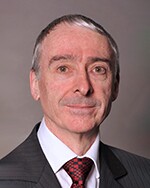Over the past year, the number of cementing and zonal-isolation papers was much lower than usual because of the cancellation and postponement of several conferences. The overall impact, however, was mitigated by the transformation of several conferences to online events. I attended one virtual event and was pleasantly surprised with the value of the technical discussions that immediately followed each paper presentation and the willingness of authors to follow up on discussions after the conference.
The development of new technology can take a significant amount of time and resources, and full worldwide introduction may take many years, giving rise to a commercial risk for the technology developer. One paper published last year described the first case history of self-healing cement technology in one geographical area more than 10 years after the publication of the first field application of the technology.
In the October 2021 issue of JPT, SPE President Kamel Ben-Naceur discussed the importance of collaboration in solving technical problems quickly and efficiently. Three of the papers selected in this section are from collaborations between multiple companies pooling their expertise and resources to develop solutions for complex problems that could not be addressed efficiently by individual companies. Papers SPE 204015 and SPE 208782 issue from consortia whose goals are to improve the efficiency and reliability of plugging-and-abandonment operations. Paper SPE 204103 is a jointly funded collaboration evaluating CO2-resistant cement with a new experimental methodology to accelerate chemical interactions between the cement and CO2, thus shortening the validation time.
The commercial risks associated with the incremental developments of existing technology can be acceptable more readily to individual companies, although this does not mean that efficient internal teamwork is not required. The three other papers selected are all supported and authored by individual companies, but each is a collaboration between multiple people with different expertise—experimental and poromechanical modeling expertise in paper SPE 206144, chemical synthesis and microfluidics expertise in paper SPE 207472, and cement chemistry and experimental expertise in paper SPE 208679.
This Month’s Technical Papers
Measured Properties of Annular Cement Compared With Ultrasonic Cement Logs
Testing and Evaluation Method Investigates Cement Expansion in Cased-Hole Wells
Ultrasonic Measurements Evaluate and Qualify Annular Creep Barriers
Recommended Additional Reading
SPE 204103 Evaluation of New Innovative Cement Blend for Enhanced CO2 and H2S Resistance by Gunnar Lende, Halliburton, et al.
SPE 206144 Advanced Cement Mechanical Integrity for Thermal Wells by Manh-Huyen Vu, Curistec, et al.
SPE 207472 Associative Microgels, New Self-Adaptive Systems To Control Fluid Loss in Well Cementing by Arnaud Cadix, Solvay, et al.

Simon James, SPE, is an independent consultant for well cementing, product development, and innovation. He has more than 30 years of experience in oilfield research and development, covering cementing, fracturing materials, screenless completions, and drilling fluids. James has developed and commercialized solutions for primary cementing, plugging and abandonment, and repair of sustained casing pressure. He also contributes to the development of industry standards. James has coauthored more than 25 technical papers and is inventor or coinventor on 38 granted US patents. He holds a BA degree in natural sciences and a PhD degree in physics, both from the University of Cambridge, UK. James is a member of the JPT Editorial Review Board and can be reached at simon@cs8-consulting.com.

